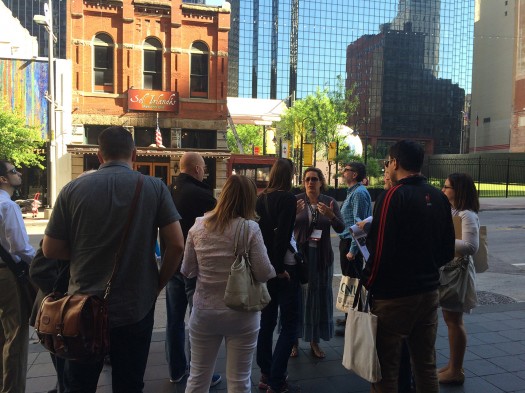Environment | Sustainability
Aktopak: Heart of the Arctic Day 2
Saturday, July 18, 2015 In the Arctic, summer sunrise comes more or less immediately after sunset, but thanks to the ship’s portholes and calm waters, we slept through. At 6:45 a.m., a happy voice over the sound system awoke us earlier than expected, calling out four polar bears on the beach of Aktopak Island, just…
Read MoreKuujjuaq: Heart of the Arctic Day 1
Friday, July 17, 2015 Launching Adventure Canada’s Heart of the Arctic expedition, we left Ottawa at dawn by charter flight, landing in Kuujjuaq before lunch. One glance out the window of the plane reinforces that “open space” has a whole new meaning here.
Read MoreThe Inuit: A view from the top of the world
Much of what we write about here on PlaceShakers has to do with dense urbanism and clustered rural development, as an alternative to auto-centric suburban development patterns that have dominated North America for the last 70 years. What we don’t talk about as much is that a big part of our raison d’etre is these…
Read MoreIt’s a Trend: More Businesses Are Choosing Downtowns and Walkable Locations
As I reported earlier this year, more and more businesses are choosing to locate in downtowns and walkable suburban locations, in part to attract younger workers who prefer a less car-dependent, more urban lifestyle. In some cases, as with hospitality giant Marriott, the preference is being expressed in planned moves from sprawling suburbs to transit-accessible places with…
Read MorePope Goes Global: Let’s talk local
Even before last week’s official release of Pope Francis’s encyclical on climate change, advocates and defenders were honing their talking points. In April, liberal Catholic author Gary Wills upped the ante on what was anticipated — accurately, it turns out — as the the pontiff’s vigorous critique of global inequities exacerbated by climate change: “The…
Read More“General Welfare” for the Next Generation
Lately I’ve been thinking about “health, safety, and general welfare” — the basis by which zoning is typically legitimized and measured — and wondering just how great a disconnect needs to form between our purported values and our land use regulations before we admit that something’s not working.
Read MoreHousehold Solar Popularity Builds, As Does Utility Industry Discomfort
A couple of weeks ago, my wife Sharon and I were out for a long neighborhood walk. This is not unusual for us, but on this particular day we took a route we hadn’t walked in quite some time. I was pleased to notice that one of the traditional, colonial-style houses we encountered was sporting…
Read MorePlaceMakers’ Intrepid Inside-Baseball Highlight Reel from CNU23
Having just wrapped up what may have been our favorite CNU ever, in Dallas on April 29 through May 2, we want to share some of the ideas that resonated the most with us. The topics below are snippets of great insights from many voices, including the likes of Andrés Duany, Fort Worth Mayor Betsy…
Read MoreGreen in the City: A recipe for mental and environmental health
The National Arbor Day Foundation has a simple app on its website that allows visitors to see how a city changes as it adds tree cover and other vegetation. Using a little sliding tool, one can gradually change the illustration from one with few trees to one with abundant trees. The difference is striking: everyone I know…
Read More

